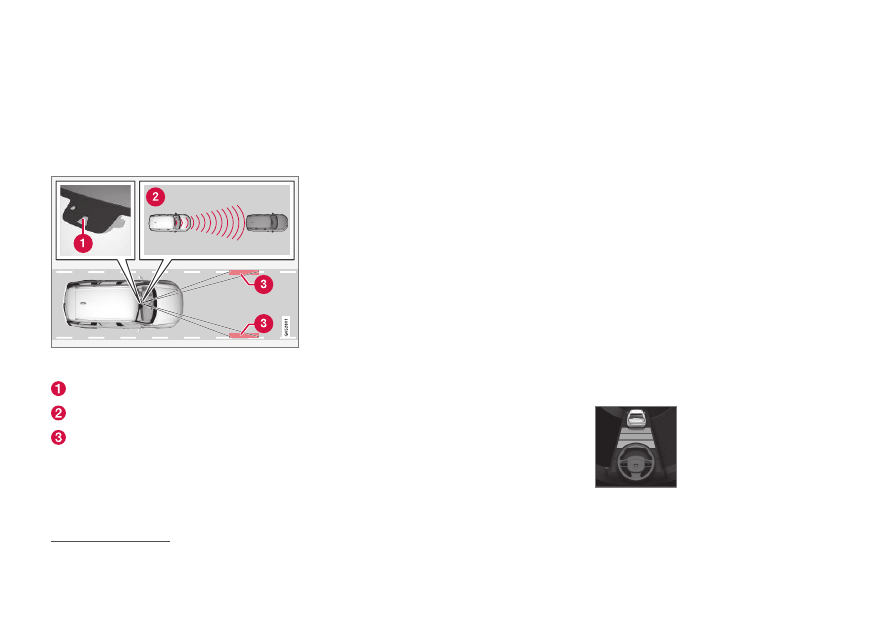Volvo XC40 (2021 year). Manual in english - page 16

DRIVER SUPPORT
* Option/accessory.
280
Pilot Assist
*
53
Pilot Assist can help the driver keep the vehi-
cle in the current traffic lane and maintain an
even speed and a set time interval to the
vehicle ahead.
Get to know Pilot Assist
The camera/radar sensor monitors the distance to
the vehicle ahead and detects lane markings.
Camera and radar sensor
Distance monitor
Lane marker line monitors
Pilot Assist helps to steer the vehicle, and you
may need to drive a few miles with Pilot Assist
before you feel completely at home with the
function. It is important to be familiar with all
of the function's applications and limitations in
order to take advantage of all it has to offer.
The Pilot Assist function is primarily intended
for use on highways and other major roads
where it can help provide a more comfortable
and relaxing driving experience.
The driver sets the desired speed and distance
to the vehicle ahead. Pilot Assist monitors the
distance to the vehicle ahead and the traffic
lane's side markers using the camera. The sys-
tem maintains the set time interval to the vehi-
cle ahead by automatically adjusting your vehi-
cle's speed and keeps your vehicle in its lane
by providing steering assistance.
Pilot Assist regulates speed by accelerating
and braking. It is normal for the brakes to emit
a slight sound when they are being used to
adjust speed.
Pilot Assist is designed to:
•
smoothly regulate speed. The driver must
apply the brakes in situations requiring
immediate braking. For example, when
there are great differences in speed
between vehicles or if the vehicle ahead
brakes suddenly. Due to limitations in the
camera and radar sensor, braking may
occur unexpectedly or not at all.
•
follow a vehicle ahead in the same lane
and maintain a time interval to that vehicle
set by the driver. If the radar sensor does
not detect a vehicle ahead, it will instead
maintain the speed set by the driver. This
will also happen if the speed of the vehicle
ahead exceeds the set speed for your vehi-
cle.
The vehicle's position in the traffic
lane
When Pilot Assist helps to steer, it attempts to
position the vehicle halfway between the visi-
ble lane marking lines. For a smoother drive, it
is a good idea to allow the vehicle to find a
good position. The driver can always adjust
the position him/herself by increasing steering
input. It is important for the driver to make
sure the vehicle is positioned safely in the lane.
If Pilot Assist does not position the vehicle
appropriately in the lane, the driver should turn
off Pilot Assist or switch to Adaptive Cruise
Control
*
.
Steering assistance
The color of the steering
wheel symbol indicates the
current status of steering
assistance:
• GREEN indicates that
steering assistance is active
53
Depending on market, this function can be either standard or optional.